ETNZ Out of the Water
A look at New Zealand hulls, wings, and appendages
|
Bermuda, June 23, 2017 |
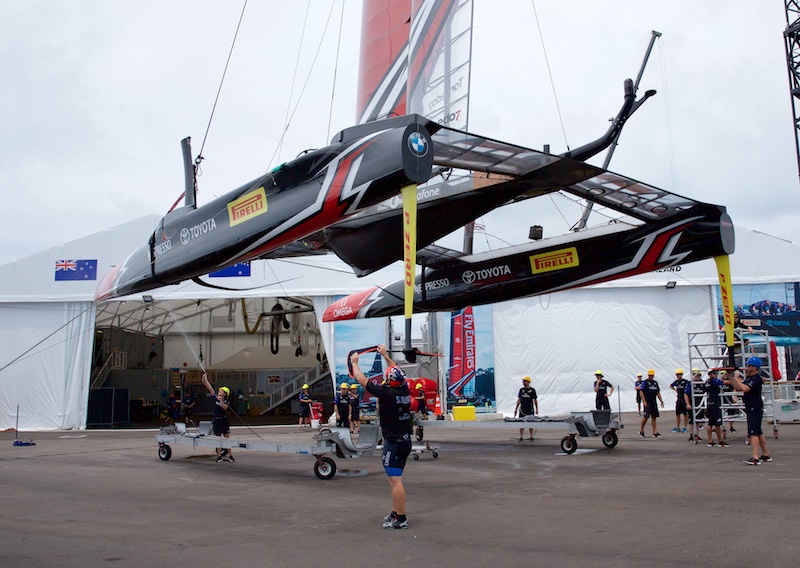
Emirates Team New Zealand puts their boat away after a practice sail on June 23. Photo:©2017 R. Steven Tsuchiya.
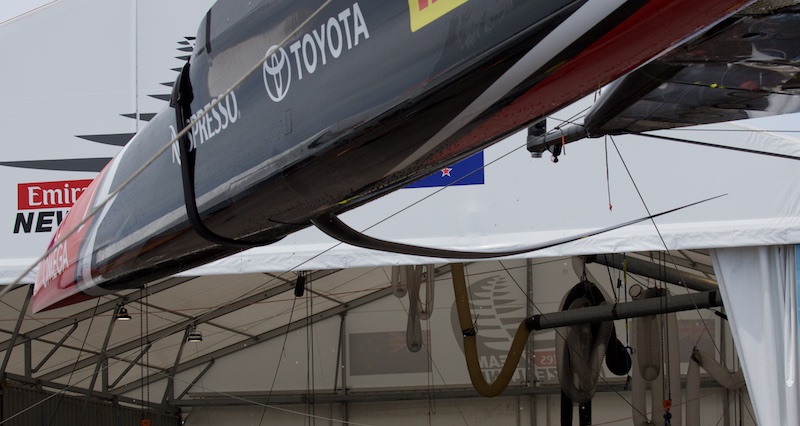
Port daggerboard. Photo:©2017 R. Steven Tsuchiya.
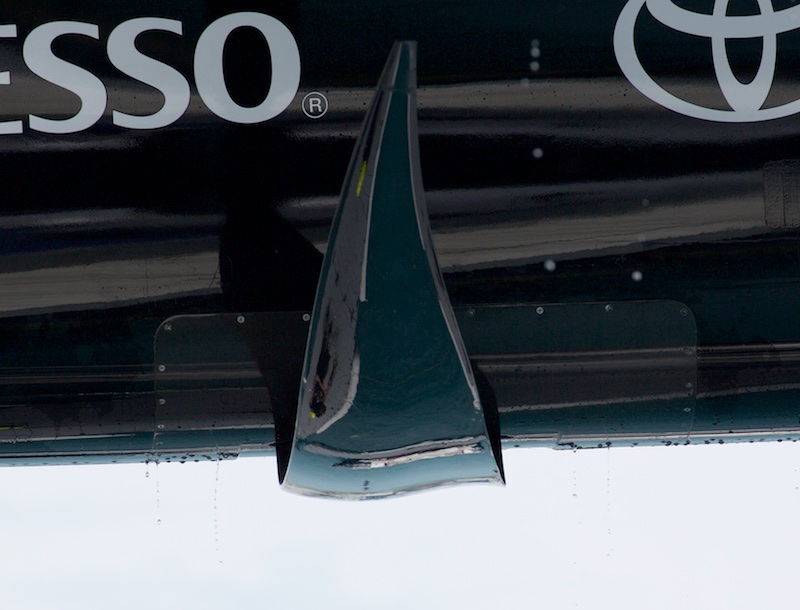
Starboard daggerboard, showing wave form from front to rear (left to right). Photo:©2017 R. Steven Tsuchiya.

Elise Beavis, Performance Engineer, washes the hull. Photo:©2017 R. Steven Tsuchiya.
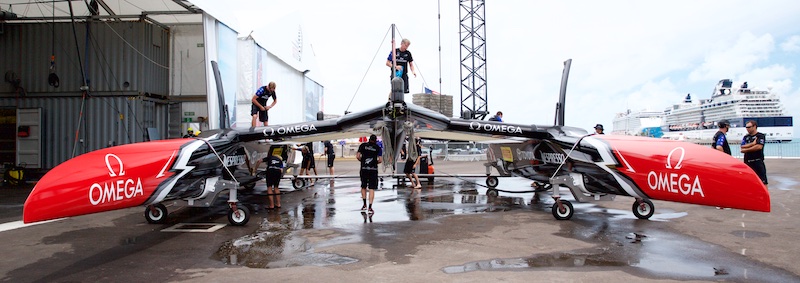
Given the length of the daggerboards, it appears this is the light air package. Photo:©2017 R. Steven Tsuchiya.
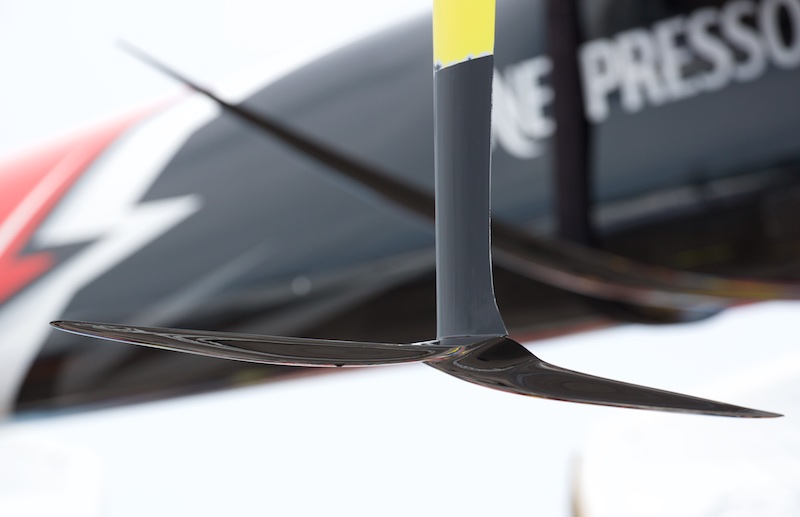
Detail of the port rudder elevator. Photo:©2017 R. Steven Tsuchiya.
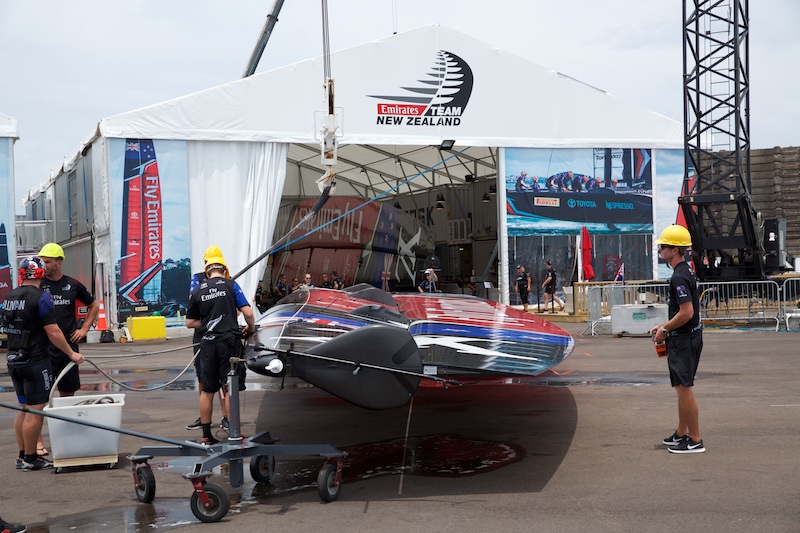
Note the endplate at the top of the wing, closest to camera. The shape of the
exterior surface of the wing is identical on all boats, dictated by the
America's Cup Class Rule. Wingsail advantages, if any, lie in control systems
and interior components that are engineered individually by each team.
Emirates Team New Zealand has two wings, the spare wing can be seen inside the
tent, above. Photo:©2017 R. Steven Tsuchiya.